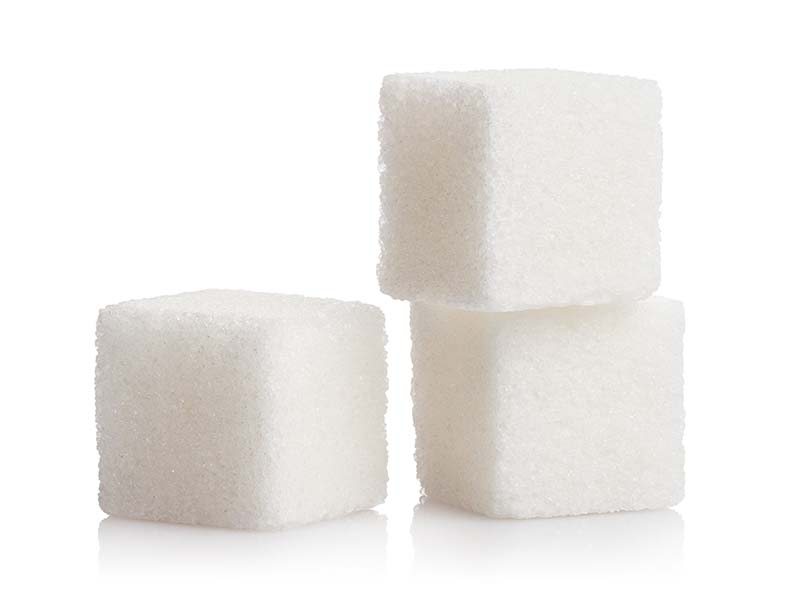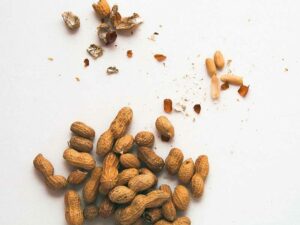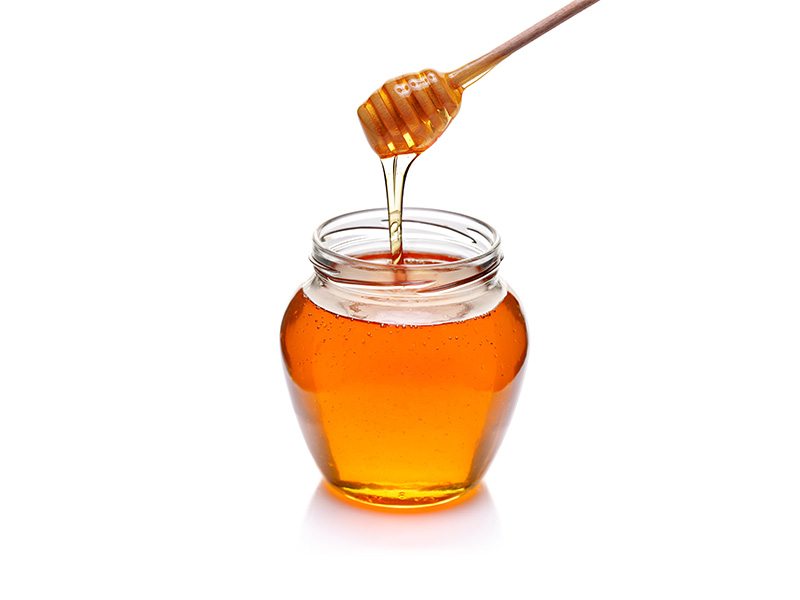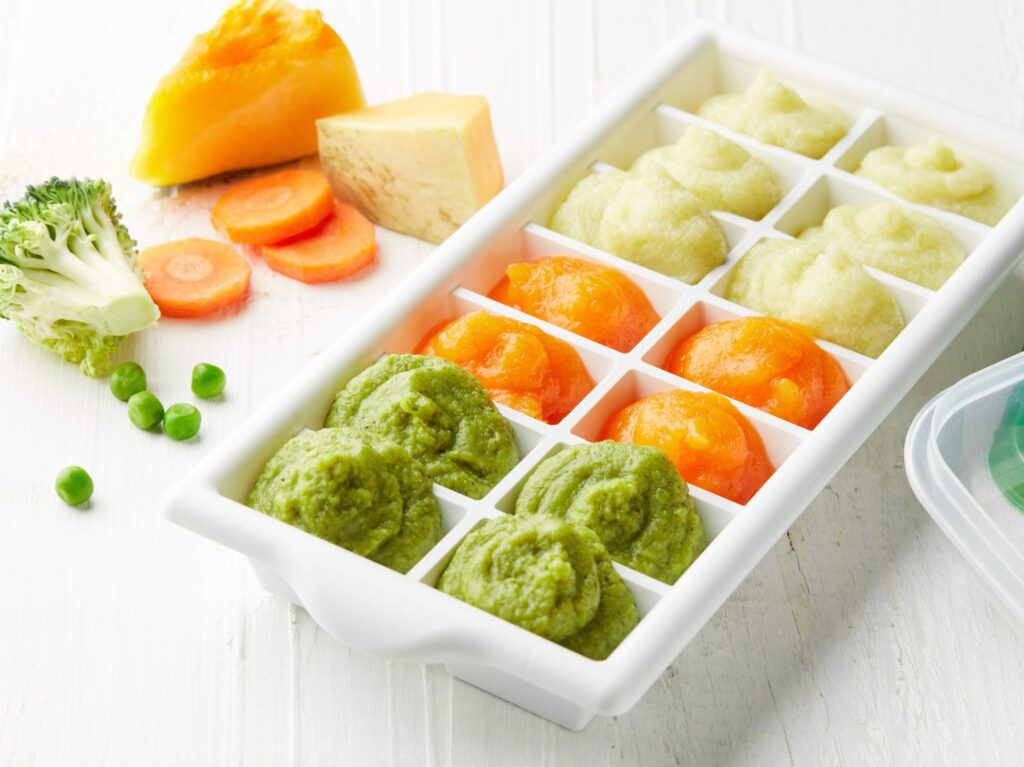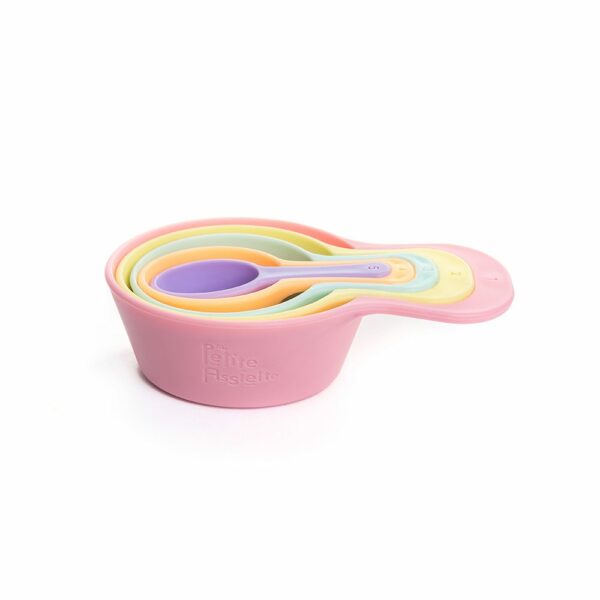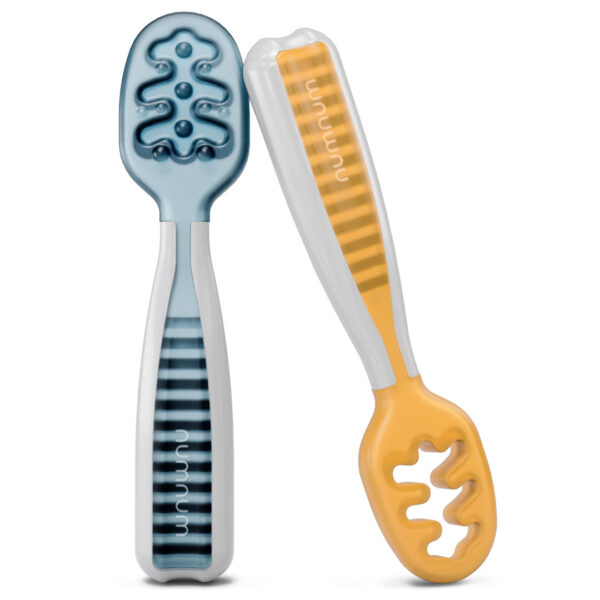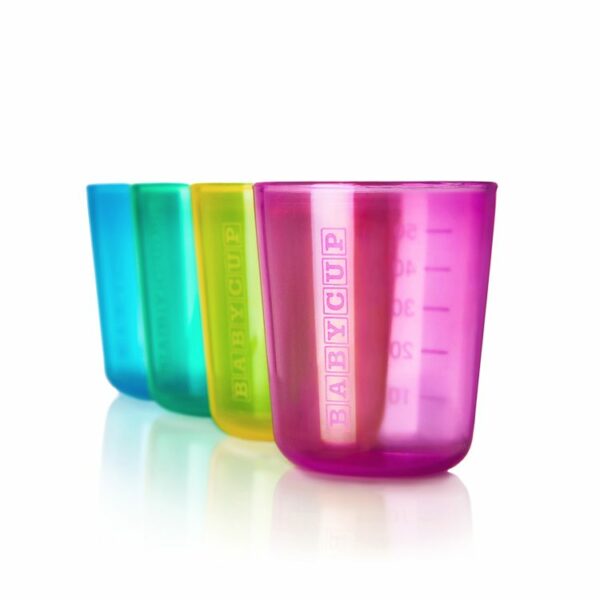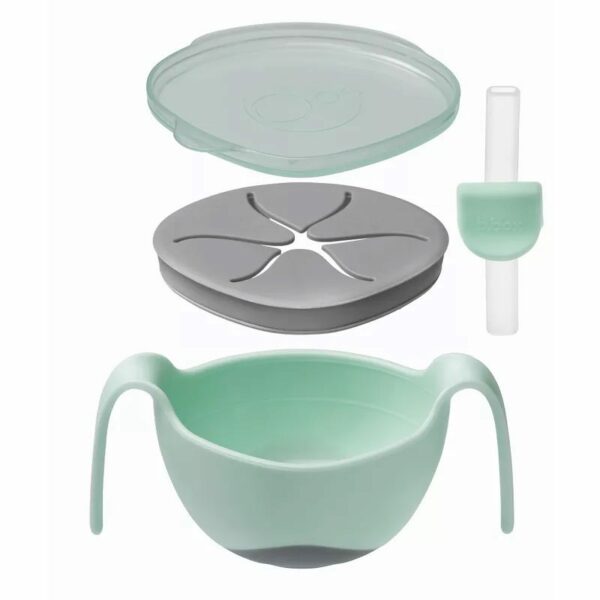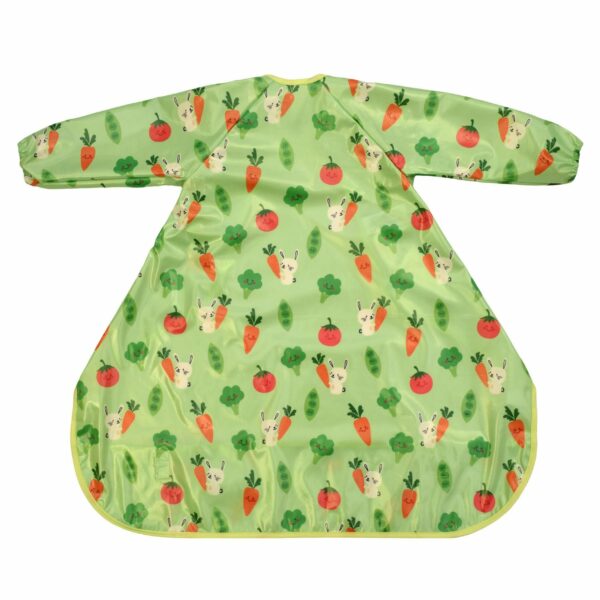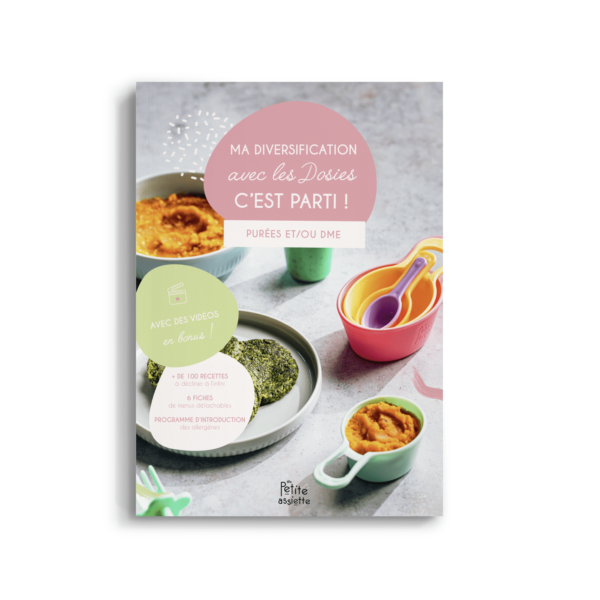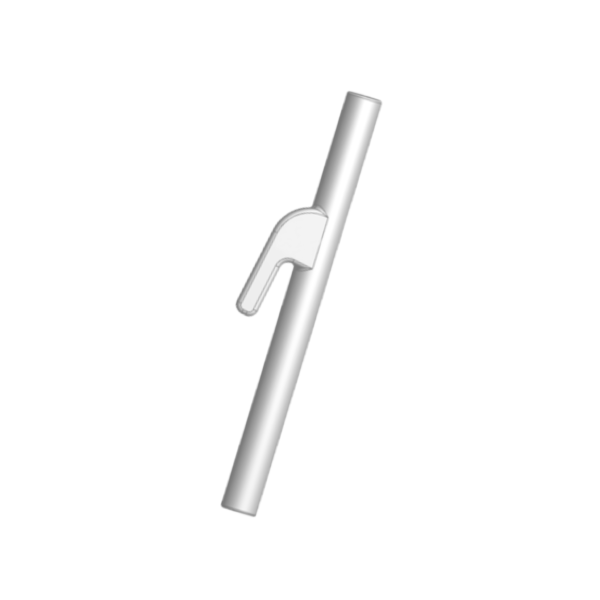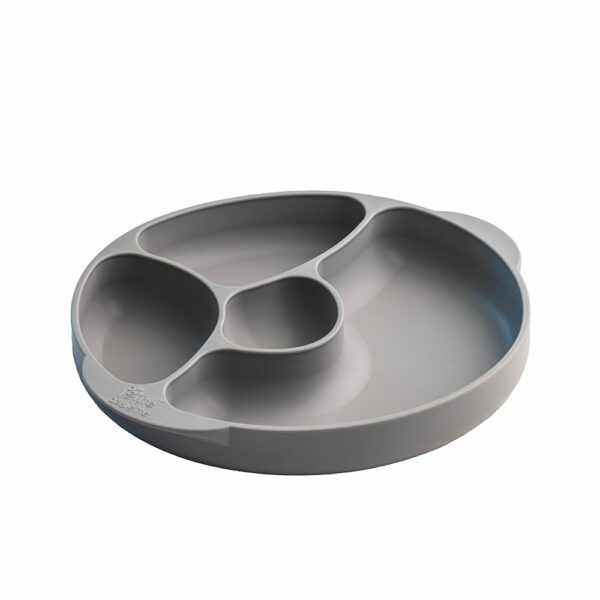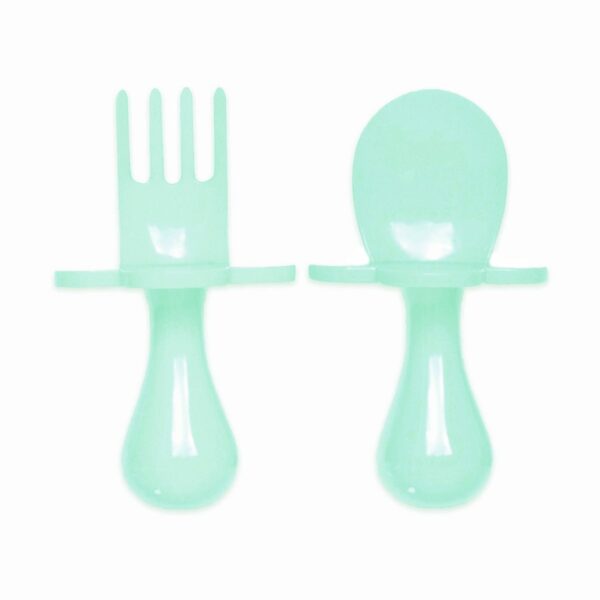Pas toujours facile de s’y retrouver parmi les produits industriels, sucrés et aussi parfois gras, à destination des jeunes enfants ! Afin de compléter mon précédent article sur le sucre, j’ai décidé de faire un état des lieux des produits industriels sucrés ainsi que leurs teneurs en glucides (= sucres) tout en faisant des petits apartés sur les outils d’aide aux choix des consommateurs et les édulcorants. Cela vous permettra de décrypter plus facilement les produits industriels adaptés à votre enfant et de lui donner des produits répondant à ses besoins nutritionnels, sans oublier le « fait maison » le plus savoureux mais le moins sucré possible. Enfin, je vous propose des repères de consommations et un petit mémo des informations importantes à retenir.
Tout commence très tôt…
Le plaisir du goût sucré existe déjà dans le liquide amniotique. Cependant, bébé n’a pas les mêmes perceptions gustatives que nous et même si les plats nous paraissent fades, il n’est pas nécessaire de rajouter du sucre dans l’alimentation de l’enfant. En effet, il est important de privilégier le sucre naturel, comme le fructose dans les fruits et le lactose dans le lait et les laitages. Il conviendra donc de faire attention aux sucres cachés ainsi qu’aux habitudes alimentaires inappropriées qui peuvent en découler.
Liste des aliments riches en sucres
Cette liste est longue et comprend toutes les confiseries, les boissons sucrées dont les jus et les nectars de fruits, les gâteaux ou les biscuits, les pâtisseries, les crèmes desserts dont certains desserts lactées, les crèmes glacées, les poudres chocolatées et les chocolats (surtout au lait et blanc), le ketchup et d’autres sauces (aigre-douce, barbecue…), les pâtes à tartiner (même bio ou sans huile de palme), le miel (fortement déconseillé avant 1 an pour des risques de botulisme), les confitures (même celles de mamie Brigitte !), le sucre même le mascobado (sucre complet non raffiné et non cristallisé), le sirop d’érable, le sirop d’agave (bien qu’un peu moins sucré que le sucre) mais également certains plats cuisinés (dans le jambon par exemple !!!) et la liste est encore bien plus longue… Certains de ces aliments, dont ceux qui ciblent les enfants de moins de 3 ans et les produits de snacking pour bébé, n’ont pas d’intérêt car ils sont souvent sucrés et également riches en matières grasses, pas toujours de bonne qualité !
Teneur en sucres de certains produits pour bébés
Je souhaiterais attirer votre attention sur certains produits pour bébé, dont la teneur en glucides est considérable et étonnamment inadaptée pour des produits réglementés. Sur les emballages alimentaires et plus précisément dans le tableau nutritionnel, vous pouvez lire « Glucides » correspondant à l’ensemble des sucres de l’aliment (aussi bien lents que rapides) et « Dont sucres » correspondant à la part de sucre ajouté. Il convient donc de tendre vers une teneur de « Dont sucres » la plus basse possible, comme le stipulent les dernières recommandations d’alimentation pédiatrique.
Voici quelques teneurs en « Glucides » et « Dont sucres » pour 100g d’aliments pour bébé en référence à des aliments de base adaptés à bébé pour pouvoir comparer facilement :
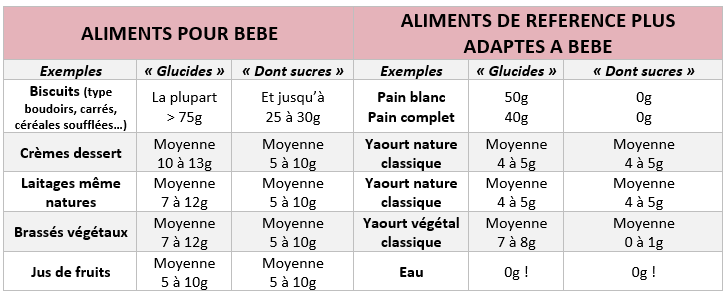
Aparté sur le « Nutri-score » et les applications d’aide aux choix des consommateurs
J’ai pu remarquer en consultation que ces différents outils ont permis depuis quelques années déjà une prise de conscience de la part des consommateurs sur les aliments industriels qu’ils consomment. Il en est de même pour les produits à destination des enfants en bas âge. En revanche, il faut rester vigilant et avoir un regard critique sur ces outils. Prenons un exemple : une spécialité laitière au muesli et aux framboises, au design « nature » et majoritairement vert, couleur inspirant confiance graphiquement parlant, obtient un « Nutriscore A » alors qu’elle contient 5 à 6 morceaux de sucre par pot. En comparaison, un yaourt nature classique au lait entier obtient un « Nutriscore B » avec 1 seul morceau de sucre par pot et seulement 0.6g de matières grasses en plus ! Invraisemblable, non ? Parfois même, le « Nutriscore » ne prend pas en compte la quantité à consommer ou le mode de cuisson. Prenons l’exemple des pommes de terre à frire en friteuse. En les achetant, le « Nutriscore » sera « A » mais après cuisson, c’est une tout autre histoire ! Petits conseils pour être des consommateurs avertis : privilégiez la liste d’ingrédients la plus courte possible et la teneur en glucides se rapprochant le plus possible d’un produit de base dans la même gamme.
Aparté sur les édulcorants
Les édulcorants, également appelés sucres de substitution ou faux-sucres, sont des additifs alimentaires ayant un goût sucré. Les édulcorants de charge (notamment les polyols comme le maltitol, le xylitol, le sorbitol…) ont un pouvoir sucrant assez proche de celui du sucre de table (de 0,5 à 1,4), c’est à dire qu’au sein d’un aliment, ils occupent le même volume que le sucre. Ils sont utilisés notamment dans de nombreux chewing-gums et confiseries. En comparaison, les édulcorants intenses (notamment l’acésulfame potassium (E950), l’aspartame (E951), le cyclamate (E952), la saccharine (E954), le sucralose (E955) ou encore la stévia) sont des substances très diverses, d’origine végétale ou obtenues par synthèse chimique. Elles ont pour point commun de présenter un pouvoir sucrant très élevé, de plusieurs dizaines à plusieurs milliers de fois supérieur à celui du sucre de table. Il s’agit des édulcorants disponibles pour sucrer ou pâtisser et ceux que l’on trouve dans les laitages allégés et les boissons « light » ou « zéro ». Par ailleurs, les populations spécifiques (femmes enceintes, enfants, sujets diabétiques, consommateurs réguliers) n’ont pas fait l’objet de suffisamment de travaux. Il apparaît donc nécessaire d’étudier davantage les risques liés à la consommation d’édulcorants intenses par ces populations. Par conséquent, je préconise un principe de précaution et encourage fortement les parents à ne pas donner d’édulcorants à leurs enfants.
Comment sucrer naturellement ?
Je vous propose des alternatives pour sucrer ou agrémenter naturellement les préparations pour vos bambins voire pour vous-mêmes : les fruits sous toutes leurs formes : frais ou secs, surgelés ou en conserve au naturel, entiers ou en compote sans sucre ajouté, en purée ou en poudre… Vous avez aussi les bases aromatiques comme la vanille, en gousse ou liquide, la fleur d’oranger (à prendre sans éthanol pour les bébés) et toutes autres épices ou herbes aromatiques comme la cannelle, la badiane ou encore la menthe et le basilic…
Comme à mon habitude, je vous partage des recettes pour régaler vos bébés et vos plus grands : desserts vanillés type semoule ou riz au lait (même infantile), milk-shakes aux fruits rouges, gâteaux moelleux à la purée de dattes, « crème dessert » au lait et à la poudre de noix de coco, tartines crousti-fondantes nappées de purée d’oléagineux… Privilégiez les préparations maison qui permettent de substituer le sucre ajouté par d’autres sources naturelles ou pour les plus grands, de se représenter les quantités de sucres ajoutées.
Fréquence de consommation
Vous l’aurez compris les produits sucrés sont à éviter le plus possible chez l’enfant de moins de 3 ans et sont donc à réserver à des moments festifs ou des occasions particulières par la suite. Un excès de sucres participe au surpoids ou à l’obésité, à la formation de caries dentaires et au développement du diabète. Par ailleurs, le sucre n’apporte que peu d’aliments nutritifs comme des vitamines et minéraux. C’est pour cela qu’il est préférable de privilégier les fruits et légumes naturels. J’en profite pour ajouter que les produits à base de chocolat, fortement répandus dans les rayons de puériculture, sont à limiter du fait de la teneur en nickel du chocolat.
À retenir dans cet article
- Bannissez le miel pour les bébés avant 1 an par rapport au risque de botulisme et le chocolat jusqu’à 3 ans par rapport à sa teneur en nickel
- Proposez du sucre ajouté avec modération, seulement à partir de 3 ans
- Limitez la consommation d’édulcorants le plus longtemps possible
- Privilégiez les moments festifs ou les occasions particulières pour donner des produits sucrés
- Favorisez le « Fait maison » ou le moins transformé avec peu voire non sucré autant que possible
Pour conclure et comme je le dis souvent aux familles de mes petits patients, privilégiez les bonnes matières grasses plutôt que le sucre, bien plus néfaste pour la santé que ce qui est véhiculé sur les matières grasses. Même Kaamelot le dit : « Le gras, c’est la vie ! ».
Diététicienne – Nutritionniste spécialisée en pédiatrie
Sources
· Haut Conseil de la Santé Publique : Avis relatif à la révision des repères alimentaires pour les enfants âgés de 0-36 mois et de 3-17 ans, 30 juin 2020
· Relevés des valeurs nutritionnelles faits en février 2022 sur des divers drives en ligne
· Pour en savoir plus sur les édulcorants intenses : Les édulcorants intenses | Anses – Agence nationale de sécurité sanitaire de l’alimentation, de l’environnement et du travail
· Pour en savoir plus sur le Nutriscore : Nutri-Score (santepubliquefrance.fr)
